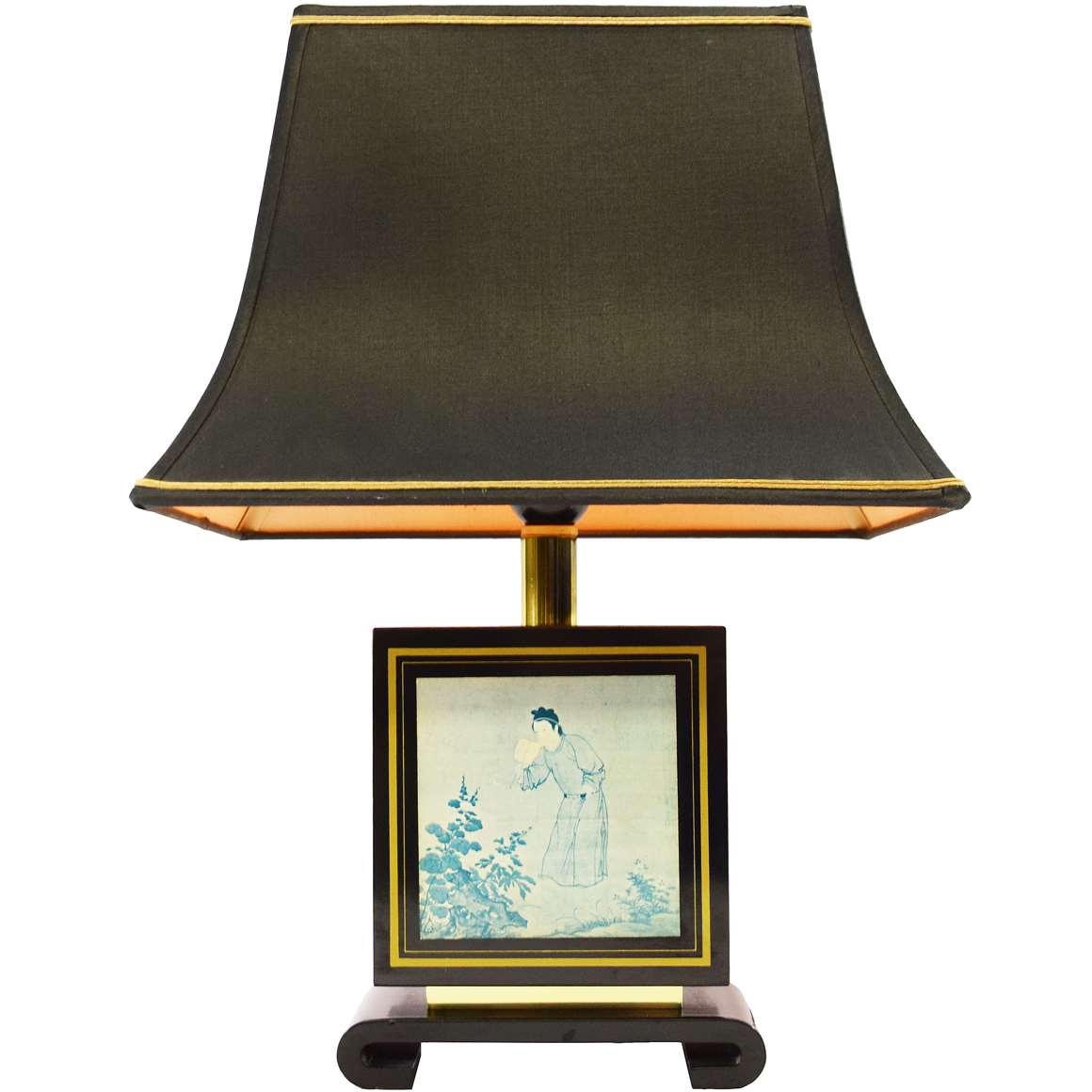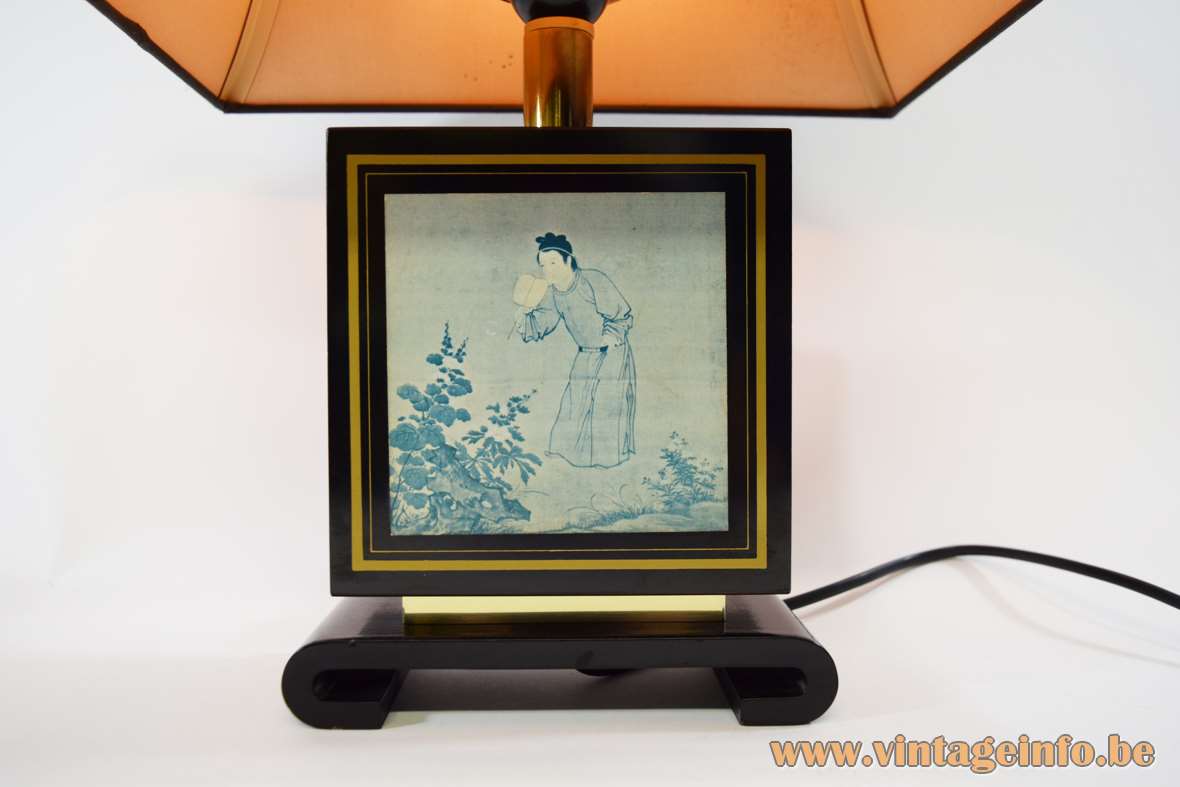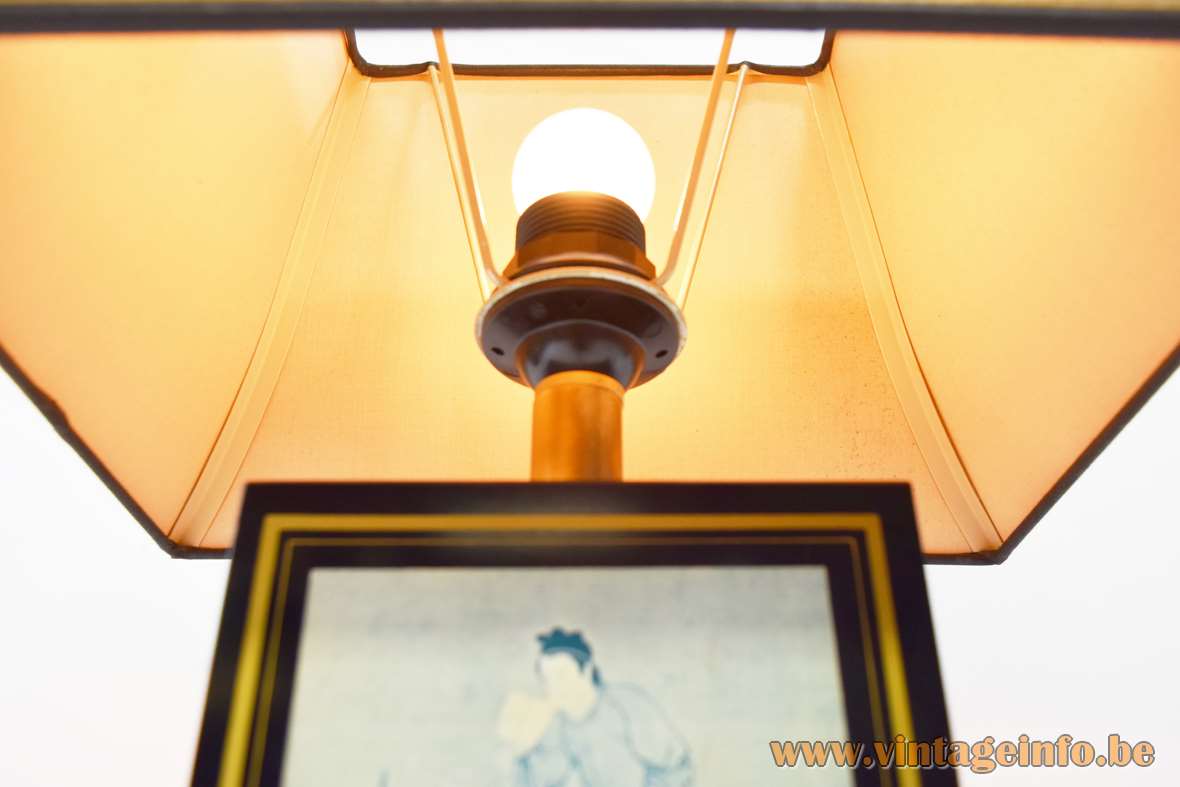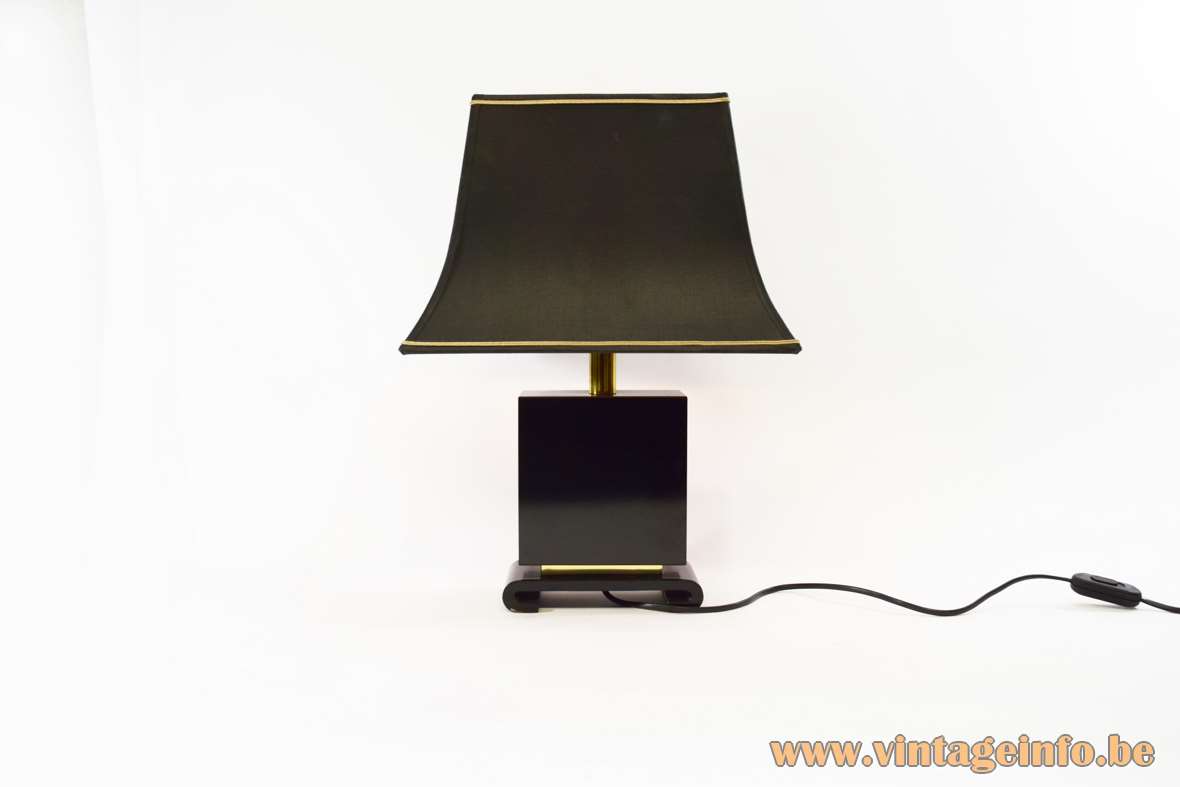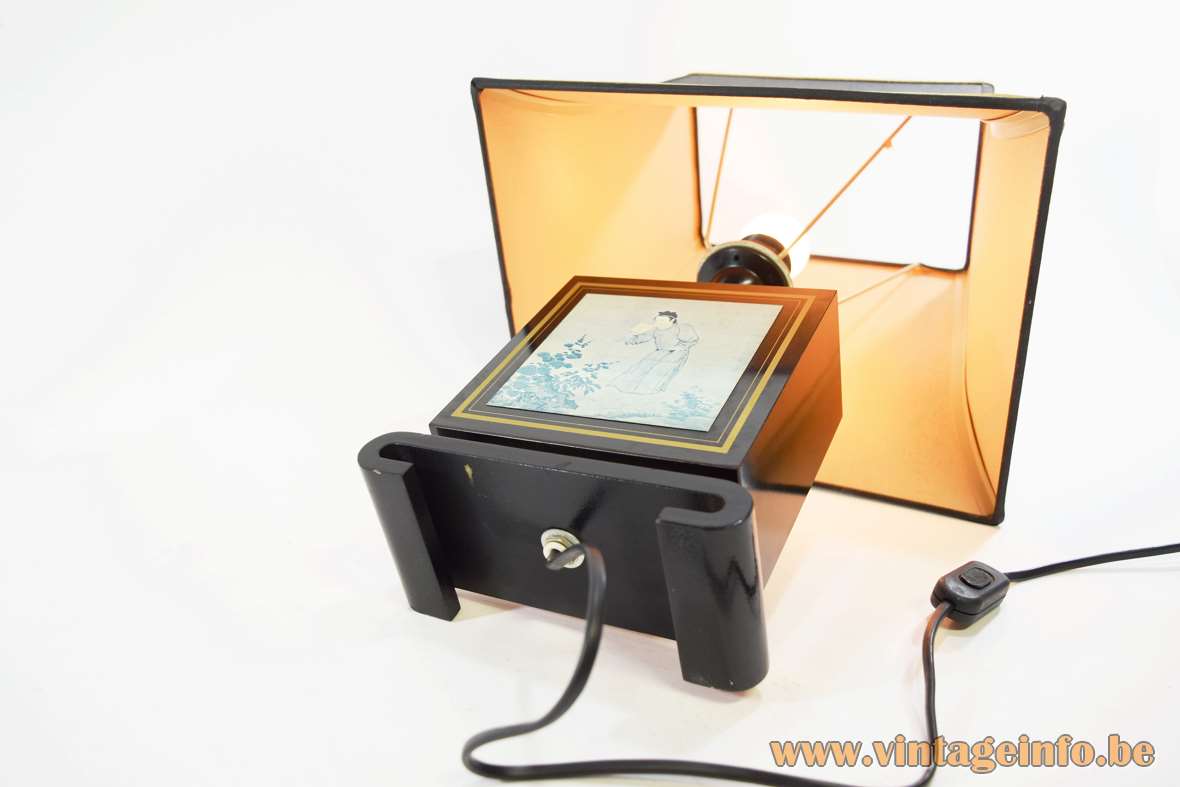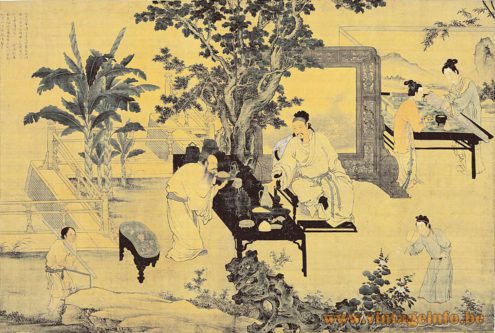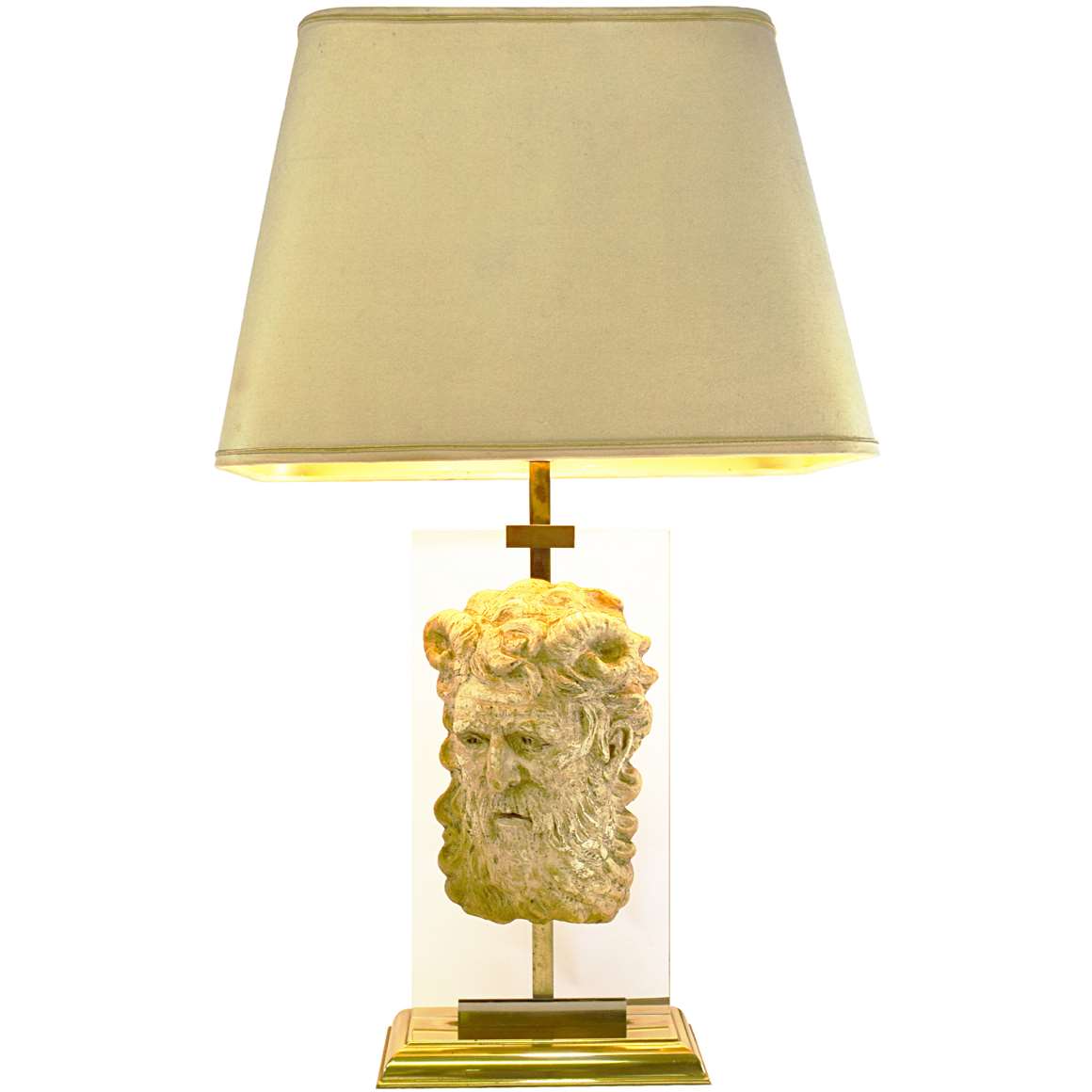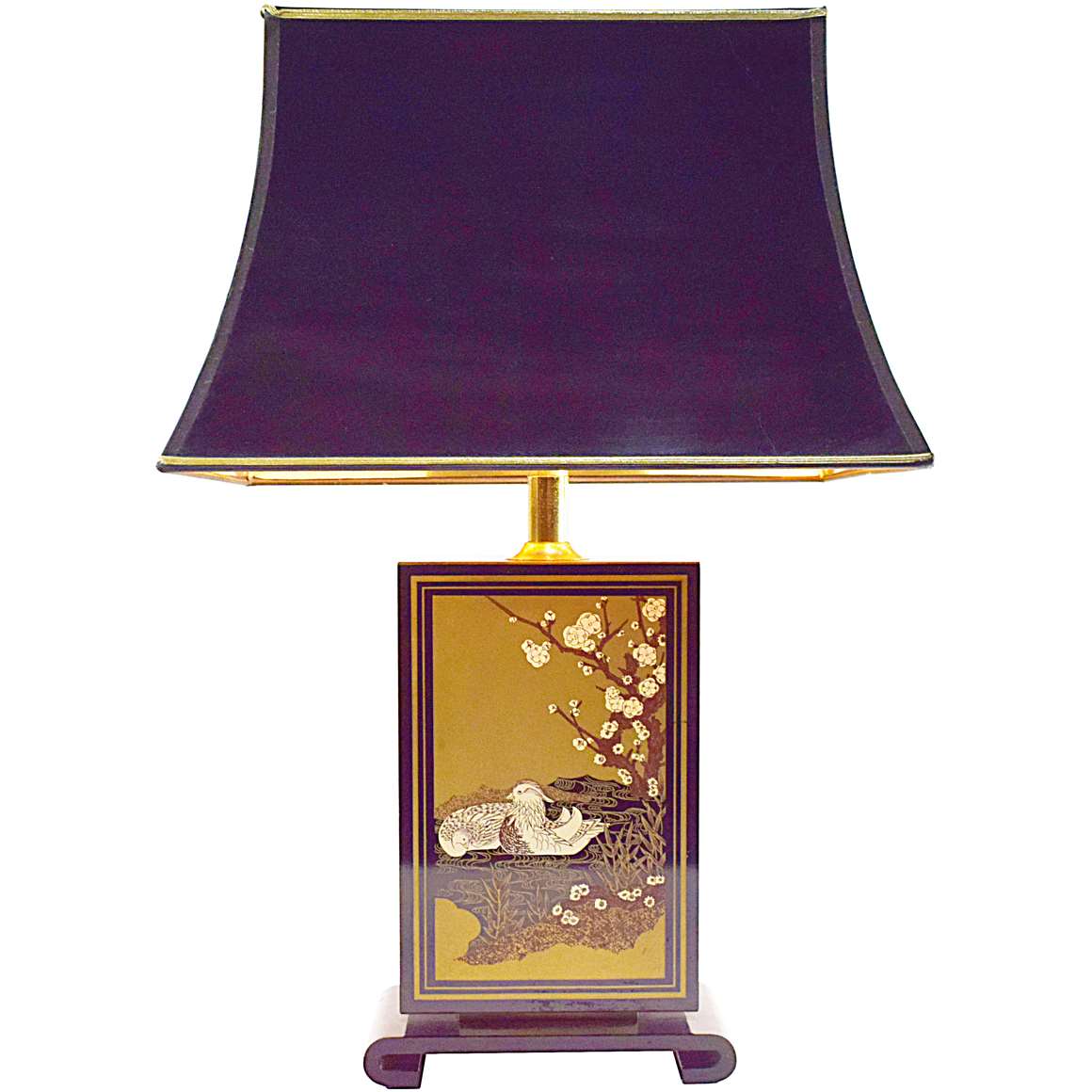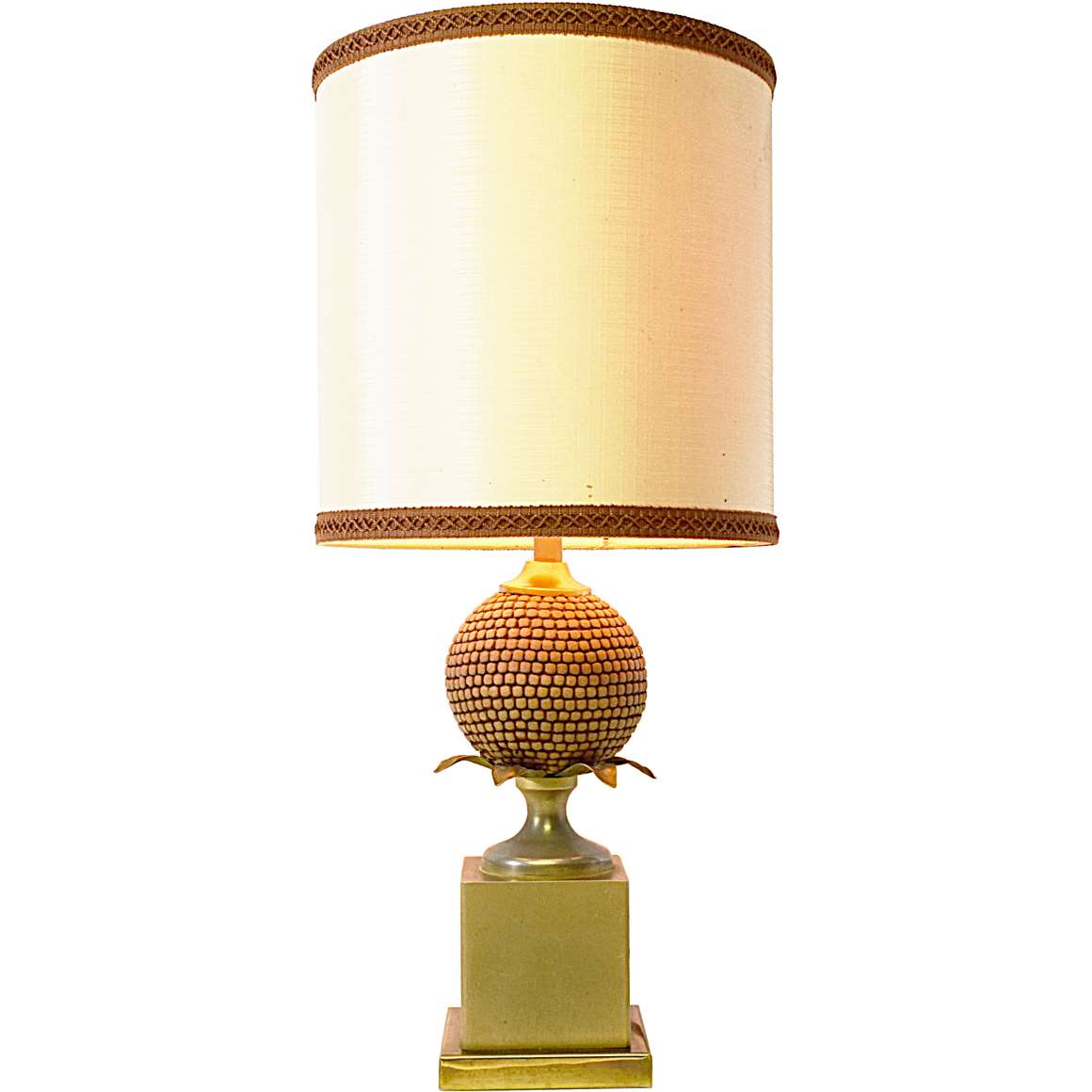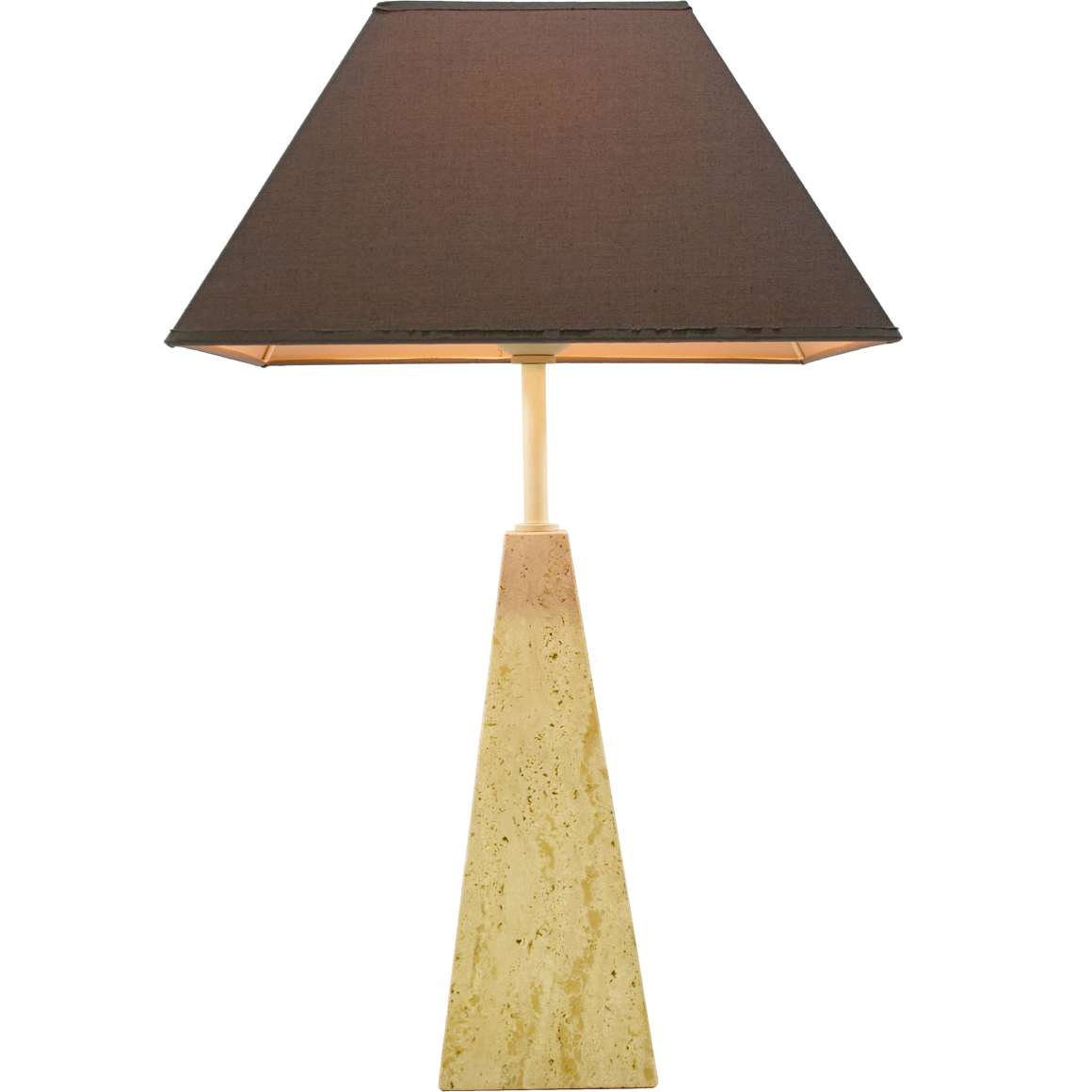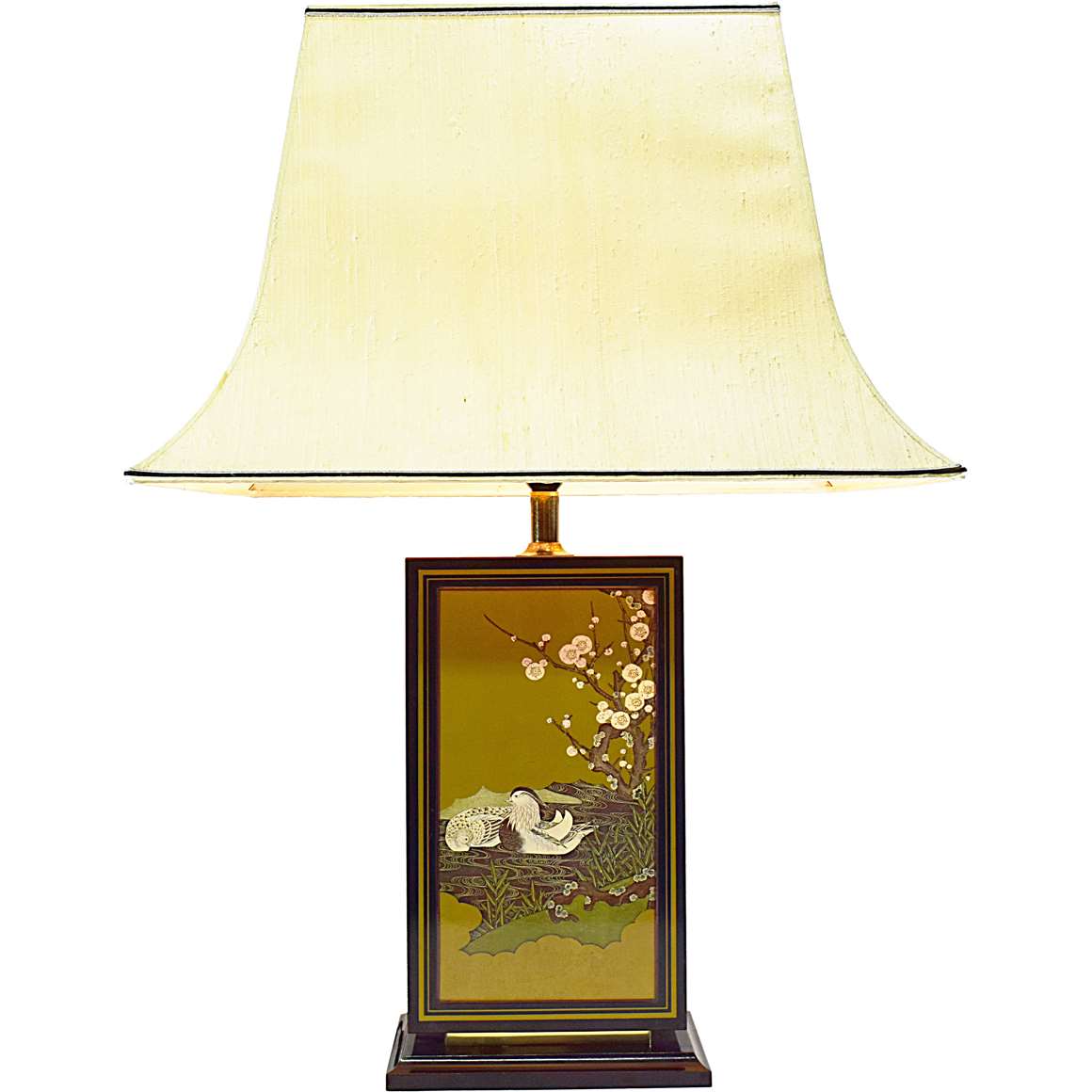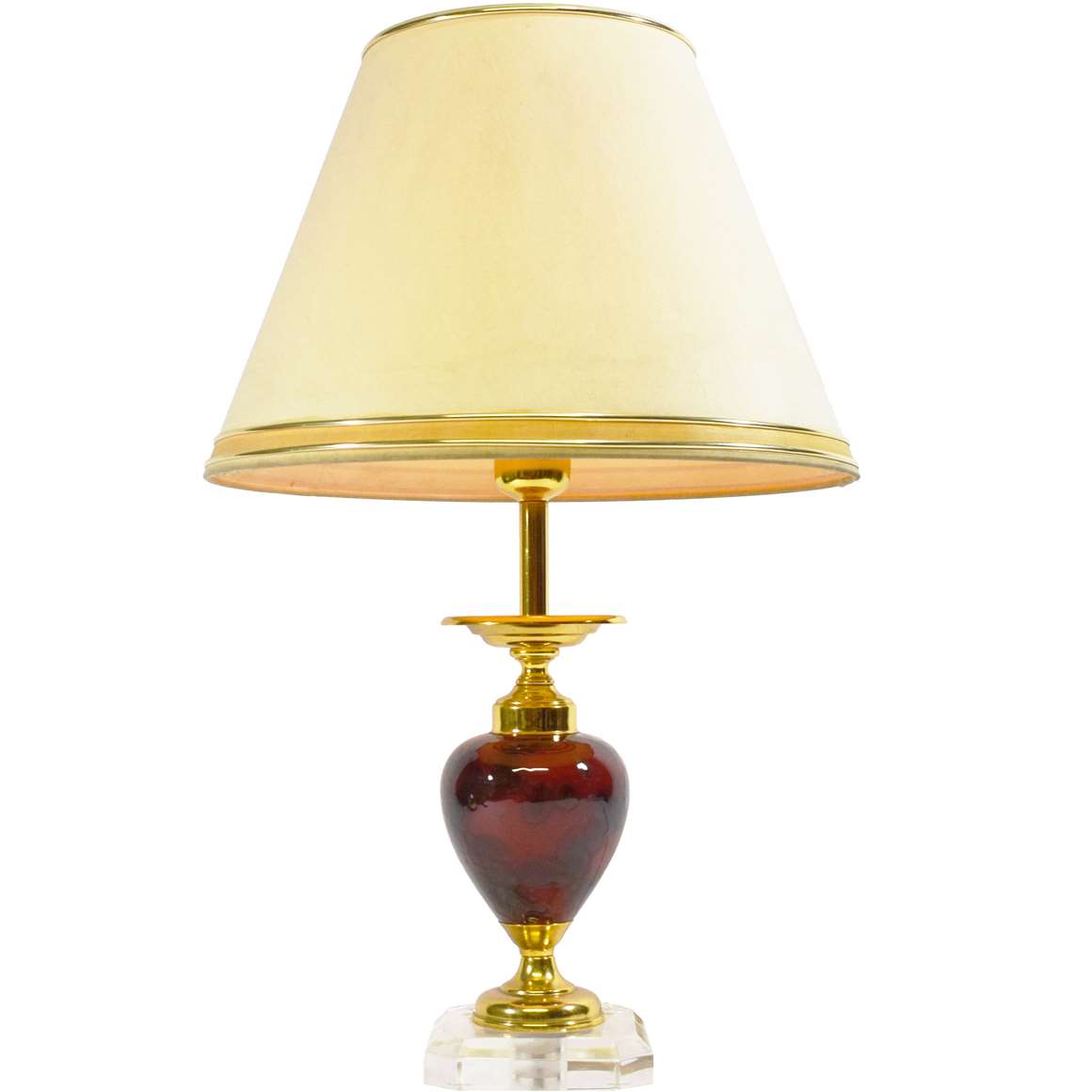Tu Chin Table Lamp
Materials: Black lacquered wood with gilded elements and brass parts. Partial photo of the painting “Enjoying Antiquities” by Tu Chin. Black fabric pagoda lampshade with gold coloured borders. Bakelite E27 socket.
Total height: 46 cm / 18.11”
Lampshade: 25 x 32 cm / 9.84 x 12.59”
Height: 30 cm / 11.81”
Base: 8,5 x 18 cm / 3.34 x 7.08”
Electricity: 1 bulb E27 – 1 x 60 watt maximum – 110/220 volt.
Any type of light bulb with an E27 socket can be used, not a specific one preferred.
Period: 1980s – Hollywood Regency style.
Designer: To be appraised.
Manufacturer: Le Dauphin, Saint Marcellin, France.
Other models: This Tu Chin table lamp exists also in a big version. Le Dauphin made several table lamps in this style, all with paintings or drawings from China or Japan. Also lamps with brass Chinese figurines were produced.
Enjoying Antiquities
Enjoying Antiquities is a painting in ink and colour on silk by Tu Chin/Du Jin (ca. 1465-1509) during the Ming Dynasty (1368-1644). This famous work is exhibited in the National Palace Museum in Taiwan.
Originally, it may have been two hanging scroll panels mounted as a standing screen. Representing the appreciation of antiquities, it depicts the leisurely activities of chess, calligraphy, zither, and painting associated with literati.
The style is straightforward and elegant, much in the tradition of the Southern Sung (1127-1279) academic mode. Tu Chin ’s fine brush style, as seen in the figures here, greatly influenced the style of T’ang Yin starting from the middle of his career.
Le Dauphin
The Le Dauphin company was founded in January 1966 by Maurice Tournu as a small lampshade company. A first factory was built in 1970. In the 1980s, more than 250 employees worked there. More than 50.000 lamps a year were produced.
Le Dauphin: Located in the heart of the region Rhône Alpes, Le Dauphin is a brand famous for its high-end luminaires and its timeless style. The artisan factory is located in Saint-Marcellin, some 50 kilometres from Grenoble.
Le Dauphin created a wide range of light fixtures, from classic ceramics to decorated metal, through the transparency of hand-cut glass.
“To dress the light so that it becomes a source of decoration” was the motto of the Le Dauphin company.
The company name has it’s origin in the former name of the province were it’s located: Dauphiné.
Le Dauphin no longer exists. It ended business in 2009 and was deleted from the register in 2013. The website stayed online until 2017.
Links (external links open in a new window)
The National Palace Museum of Taipei – Wikipedia
Paintings in the National Palace Museum – Wikimedia
The National Palace Museum website
Enjoying Antiquities (玩古圖) on the China Online Museum
The village of Saint-Marcellin – Wikipedia
Saint-Marcellin is also famous for his soft cheese:
Saint-Marcellin cheese – Wikipedia
